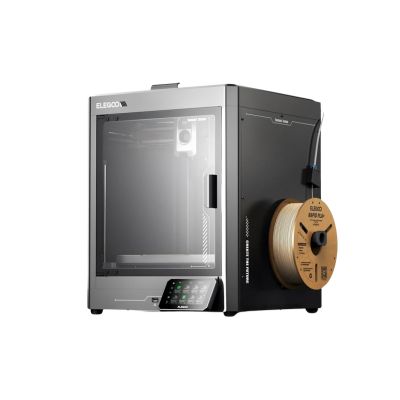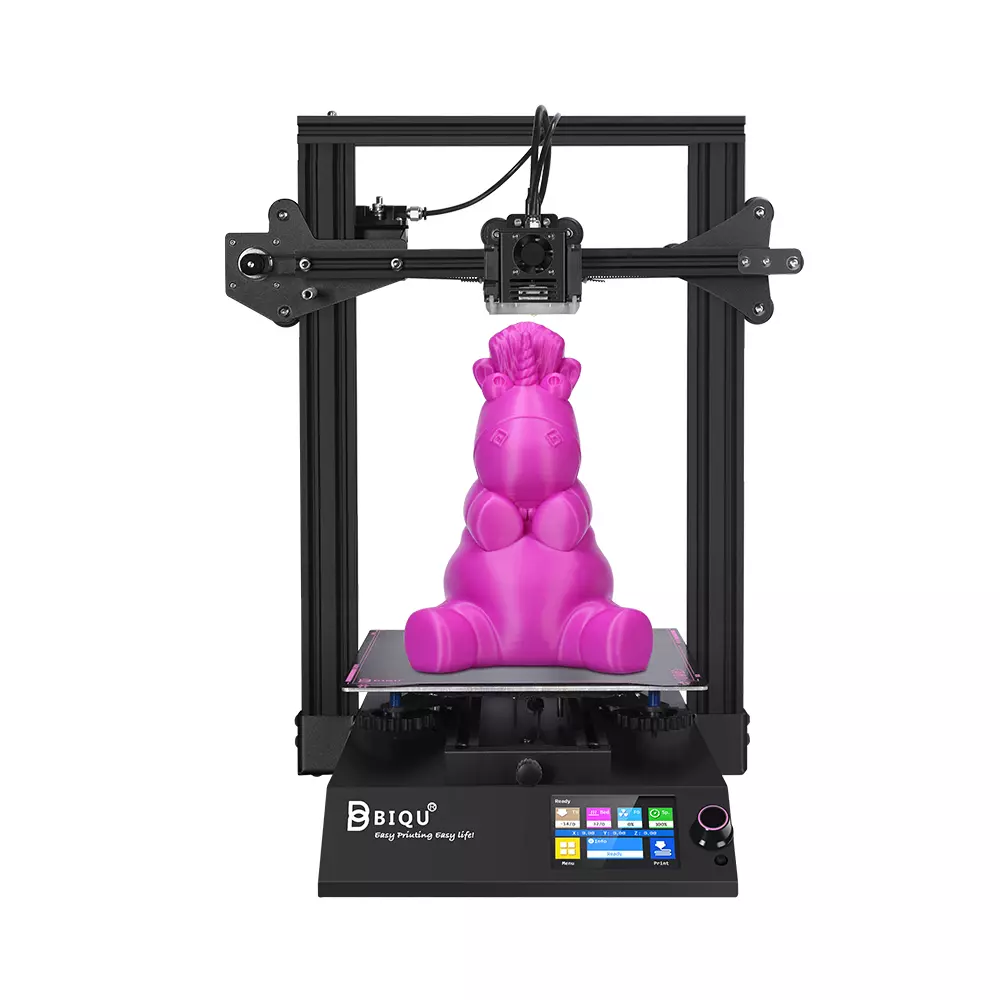Compare Centauri Carbon vs BIQU B1
Comparison between the best 3D printers
Choose the best 3D printer at the best price. The cheapest 3D printers are here.
Buy a 3D printer here with 3D Fila.
 |
 |
|
| Model | Centauri Carbon |
BIQU B1 |
| Printing Material | Filament | Filament |
| Buy Filament for Elegoo Centauri Carbon | Buy Filament forBigTreeTech BIQU B1 | |
| Estimated price | $500,00 | $269,00 |
| Manufacturer | Elegoo | BigTreeTech |
| Release Year | 2025 | 2020 |
| Print Volume [mm] | 256x256x256 | 235x235x270 |
| Printer Size [mm] | 500x500x600 | 412x402x492 |
| Weight [kg] | 17,5 | 8,00 |
| Power Loss Recovery | YES | YES |
| Enclosed printer | YES | NO |
| Bed Leveling | Automatic | Manual |
| Filament End Sensor | YES | YES |
| Bed type | Heated | Heated |
| Power supply system | Direct Drive | Bowden |
| Standard nozzle | 0,4 | 0,4 |
| Maximum Nozzle Temperature [°C] | 300 | 250 |
| Maximum Bed Temperature [°C] | 110 | 100 |
| Maximum printing speed [mm/s] | 500 | 100 |
| Filament holder | YES | YES |
| Camera for supervision | YES | YES |
| Recommended filaments | PLA, PETG, ABS, ASA, TPU, NYLON, CARBON FIBER | PLA, TPU, ABS, PETG |
| Recommended slicers | Elegoo Slicer, Orca Slicer | Cura, Simplify, Slic3r |
| Maximum Resolution [mm] | 0,1 | 0,1 |
| Processor | 32 Bits BTT SKR V 1.4 | |
| Display | Touchscreen 4,3'' | Touchscreen TFT 3,5'' |
| Power Supply | 350 W | 24V / 360W |
| Connectivity | WiFi, SD, USB | SD / USB |
| Operating systems | Windows, Linux e Macbook | Windows, Mac, Linux |
| Date of registration in the system | 2025-02-10 | 2021-04-14 |
| Release date | 2025 | 2020 |
| Extra features | The Elegoo Centauri Carbon is a CoreXY 3D printer with an enclosed structure, direct drive extruder, and hardened steel components for abrasive materials. It features automatic bed leveling, a touchscreen, a filament cutting system, and an elongated nozzle designed to reduce clogs. It offers Wi-Fi connectivity for remote file transfer and runs on a Klipper-based firmware, providing advanced control and precise adjustments. | The BIQU B1 is an advanced 3D printer with a silent 32-bit BTT SKR V1.4 motherboard and ARM Cortex-M3 CPU, offering DIY interfaces (I2C, SPI, WiFi) and dual Z-axis. Its dual BTT B1 TFT35 V3.0 operating system allows real-time monitoring and multiple printing modes, including G-code visualization effects. It stands out for its BIQU SSS (Super Spring Steel), ensuring easy model adhesion and simplified removal, with the possibility of using it on both sides. It includes a filament sensor, automatically pausing printing in case of filament breakage. The multicolored RGB lights integrated into the hotend allow you to view the printing status even at night. Additional notes include the need for a BIQU-specific Type-C cable and extra interfaces for smart filament sensor and BL Touch. |
| Support for multiple colors and materials (AMS and CFS) | NO | NO |
Notes * |
||
| Cost-benefit | 8 / 10 | 7 / 10 |
| Hardware | 6 / 10 | 2 / 10 |
| Tela | . | . |
| Print volume | 4 / 10 | 3 / 10 |
| Performance | 4 / 10 | 1 / 10 |
Conclusion |
| In conclusion, when comparing the Elegoo Centauri Carbon and the BigTreeTech BIQU B1 3D printers, each model presents its unique advantages and considerations that will appeal to different types of users. The Elegoo Centauri Carbon, while pricier, offers a larger print volume, automatic bed leveling, and a robust build suitable for advanced materials. Its enclosed design enhances safety and temperature stability, making it a great choice for users looking to print with a diverse range of filaments, including specialty materials. The printer's high maximum printing speed and temperature capabilities further contribute to its versatility and performance, catering to professionals or serious hobbyists seeking quality and efficiency. On the other hand, the BIQU B1 stands out as a budget-friendly option with commendable features for beginners and intermediate users. Although it has a smaller print volume and requires manual bed leveling, it still boasts a reliable print quality and efficient operation. Its dual Z-axis and silent motherboard are advantages that enhance user experience, while the dual-sided print bed offers added convenience during use. Ultimately, the choice between these two printers will depend on the user's specific needs, budget constraints, and level of expertise in 3D printing. For those prioritizing performance and advanced features, the Centauri Carbon is the superior option, whereas the BIQU B1 provides an excellent balance of cost and functionality for those new to 3D printing or requiring a more economical solution. |

